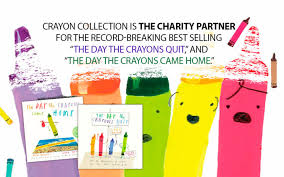Late November. 13 year old Boy commits to ski every day, components for success in home schooling, Eco Pen, Make a little restaurant for the Animals who visit your yard, sweater recycling, Alaska Kids, lights to light the darker nights during the winter months, Break from the What if cycle, A man who has made himself immune to snake bites, to help humans bit by snakes, by teaching himself along the way.
Home schooling success.
3 main components for success
Consistency * Boundaries * Structure
ABC Morning News, child Psychologist 11/20/20
13 year old boy, Jackson Hole commits to ski every day
check out the video
https://www.outsideonline.com/2418306/kai-jones-skis-jackson-hole
Eco pen.
Make a restaurant for the yard animals.
RECYCLING
Crayons. Giving to local schools to help them.
Clothing to sweater recycling
Spreading germs/Covid generation X
Beacon of the Moment
Something like this, by
Artist Yu-Wen Wu’s 'Lantern Stories'
Alaska Kids
From Homestead Rescue, the Rainey Family.
http://www.alaskakids.org/index.cfm/know-alaska/Alaska-History/Sourdough-Climb
Light installations creating and representing Peace and Hope throughout the dark season ahead in the Northern Hemisphere.
https://useum.org/artwork/Carnation-Lily-Lily-Rose-John-Singer-Sargent-1885
https://www.wbur.org/artery/2020/11/11/yu-wen-wu-lantern-stories
Maybe Like John Singer Sargents Fairy Fairy Rose, 1885, above
Recreated and lit on the lawn. A Heart for Hope and Love to go out to the Neighborhood and World where we share our lives.
Think Billboard...esqe, or just stringed along lights to draw attention to the space, as a beacon for the community for the future.
DONATING to Kids
created by a young teen and her family and friends in the Boston Area.
Inspiration
https://www.catiescloset.org/make-a-donation-1
Science
How To Help Kids Break The What-If Cycle From Two Psychology Experts
By Shefali Tsabary, Ph.D. & Renee Jain, MAPP
How To Help Kids Break The What-If Cycle From Two Psychology Experts
This nonprofit connects loved ones during Covid hospitalizations when family members can’t be together.
“No one wants a family member to be alone when they’re passing from this world,” Eli shares. “We couldn't hold her hand, hug her, sit next to her, or give her words of reassurance. At the same time, I feared she thought she was alone, so being able to virtually call her to let her know she wasn’t alone, and that we were all with her at the same time helped all of us.”
This is an account of a Wisconsin truck driver who has made himself immune to the worst venoms there are, to help mankind with his antibodies, for a vaccine against snakebites.
The author has also written an account of his own Rattlesnake bite in the pages of Outside Magazine.
This is the third article on this topic in Outside Magazine. I began reading them because I am afraid of snakes and hoped to help desensitize myself and learn about them and how to survive if bitten.
Disclaimer, Don't try this at home, or anywhere.
about the immunologist and his research. How vaccines are researched and made.
Glanville’s major contribution at Pfizer (and the reason he was promoted to principal scientist in just four years) was writing 45,000 lines of code to optimize the process of matching antibodies to antigens. Searches that once took a team of scientists ten years to complete, Glanville says, can now be done in a week by a master’s student working alone. His software taught the computer to find thousands of matching antibodies from the tens of billions in a library. None of those matches would be perfect, but by swapping various features they share, one or a few of them could be made into something close. Glanville had developed a way to dramatically cull the number of potential candidates and then engineer the most promising ones. He transformed the search for antibody drugs from a needle in a hundred hay stacks to a needle in just one.
In 2012, at 31, Glanville took his code and left his prestigious job at Pfizer. He then founded Distributed Bio while also becoming the first Ph.D. candidate in computational immunology at Stanford University. Five years later, Glanville completed his doctorate, and business at Distributed Bio was booming. He now licenses his software and antibody library back to Pfizer and each of nine other pharmaceutical giants for around $500,000 a year and typically receives 2 percent of the profit from any drugs developed using them. With those earnings, Distributed Bio has added a fleet of new hardware to help in the discovery, isolation, refinement, and cloning of antibodies, making his firm, which employs 20 researchers, a leader in the field.
Glanville’s baby was his flu-vaccine work, and important insights he gained during that quest would also apply to snakebites. As with the toxins in venom, influenza strains are incredibly diverse. We get flu shots every year because the virus mutates somewhere between 10 and 20 percent from one season to the next, rendering our defenses useless. To succeed with a flu vaccine, however, Glanville just needed to engineer antibodies that sniffed out the virus’ weak spot, that one place that doesn’t evolve even as everything around it does.
This is an amazing topic and teaches about self immunization, from snake bites from the deadliest snakes on the planet, an immunologist and the application of antibodies in immunology.
Thanks for stopping by,
Eliza



















Comments
Post a Comment